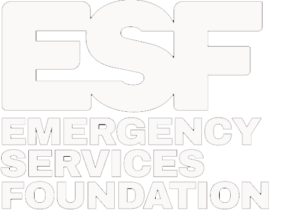The article ‘An Open Label Pilot Study of a Brief Psychosocial Intervention for Disaster and Trauma Survivors’ is an evaluation of the SOLAR program, piloted by Phoenix. SOLAR is an internationally developed, brief (five sessions) and scalable psychosocial intervention that targets distress and poor adjustment following disaster and trauma. Since coaches are not expected to have specialist expertise in mental health, the program’s potential reach is increased, and it helps to prevent overwhelming an already burdened mental healthcare system in the aftermath of disaster.
This scoping review by Smith, Dean and Holmes (2021) looks at the evidence about mental health risk and prevalence among first responders and the state of evidence regarding current best practices for supporting first responder well-being throughout the first responder career and into retirement. The article is titled, Supporting the Mental Health and Well-Being of First Responders from Career to Retirement: A Scoping Review.
The Mind Blue Light Program ran from 2015-2019 with the aim to improve wellbeing and mental health for emergency responders (ERs) in the UK. The Mind website maintains a dazzling variety of resources from the program, including lived experience videos, resources for becoming a wellbeing champion and supporting mental health as an employer. The report on its resilience building interventions can be found here, a research summary of the program 2016-2018 here, the final report (in full) here, and a summary of the final report here.
Wild, Greenberg, Moulds, Sharp, Fear, Harvey, Wessely. and Bryant (2020) offer a review and analyses of what works in pre-incident interventions to build resilience in first responders. This article also provides recommendations about what to offer and what to avoid in programs and services for first responders
What Works to Promote Workplace Wellbeing? is a rapid review of recent policy developments an intervention research in Australia, including work specific to the Victorian government. It also reviews developments in Canada, the United Kingdom, the United States, New Zealand, and policies from other select OECD countries and international bodies. It was created by SuperFriend, VicHealth and WorkSafe under the banner of the Victorian Workplace Mental Wellbeing Collaboration.
Workplace Mental Health: International Review of Guidelines is a systematic review to determine the quality and comprehensiveness of guidelines developed for employers to detect, prevent, and manage mental health problems in the workplace. Guidelines are assessed by Memish, Bartlett, Dawkins and Martin from a multi-disciplinary view and the best were deemed to be those that focused on prevention, rather the detection and treatment of mental health problems in the workplace.
This Review of Evidence of Interventions Designed to Reduce Workplace Mental Ill-Health by Nick Glozier from the University of Sydney and issues arising when appraising and implementing these interventions. As well as offering a high-level summary, it also suggests a model within which interventions can be designed, implemented and evaluated using an integrated approach. This review is intended to be read in conjunction with the review of psycho-social workplace risks which define the risks in this paper and gives evidence of how they harm.
Case Study Research Findings is the result of a three-year evaluative study of organisational change in 40 workplaces that implemented ‘The National Standard of Canada for Psychological Health and Safety In The Workplace’ (the Standard). It is produced by the Mental Health Commission of Canada and assesses progress and experience across five elements: Commitment and Policy; Planning; Implementation; Evaluation and Corrective Action; Management Review.
Wellbeing on Call is a project funded by the WorkSafe’s WorkWell Mental Health Improvement Fund that looks to make a difference to the mental health and wellbeing of contact centre workers, could be of relevance to ESTA.
In her PhD thesis Workplace Mental Health and the Role of Organisational Leaders Clare Shann evaluates the degree of sustained change in how leaders manages depression in the workplace after completing an online workplace mental health program. This study also examined whether change in stigma level and mental health literacy led to behavioural change – indicating that learning was sustainable by becoming embedded in workplace culture.
This Longitudinal Assessment of the Road to Mental Readiness (R2MR) Training among municipal police “looks at change in self-reported mental health symptoms, resilience, mental health awareness, work engagement, and mental health stigma attitudes over a one-year time frame”. Written by Carleton, Korol, Hozempa, and Anderson.
This Systematic Review of Interventions to Target Stigma of mental illness at the workplace by Hanisch et al (2016) provides evidence from 16 studies. The effectiveness of anti-stigma interventions at the workplace was assessed by examining changes in: (1) knowledge of mental disorders and their treatment and recognition of signs/symptoms of mental illness, (2) attitudes towards people with mental-health problems, and (3) supportive behavior.
This report is an Evaluation of Four ‘Mental Health Network’ pilots run by UK Blue Light from 2016-2017. These networks are a team of mental health advocates within the emergency services that stretches across many different functions and levels of seniority. The networks were set up to facilitate local emergency services work together to improve staff and volunteers’ mental wellbeing.
The British Columbia First Responder Resilience Program is a peer-based, residential, holistic, mountain retreat that has around ten participants (2 or more professional facilitators and two team leads). It emerged from a collaboration between First Responder participants, the BC Professional Fire Fighters Association, and Drs. Shields and Kuhl (from The Men’s Initiative, UBC’s Faculty of Medicine). Team leads are first responders who have already gone through the program. Evidence for its effectiveness can be found 12 minutes in to this video by Prof. Shields, and 5 minutes in to this video by a leader who did the program

